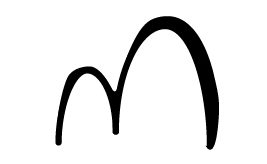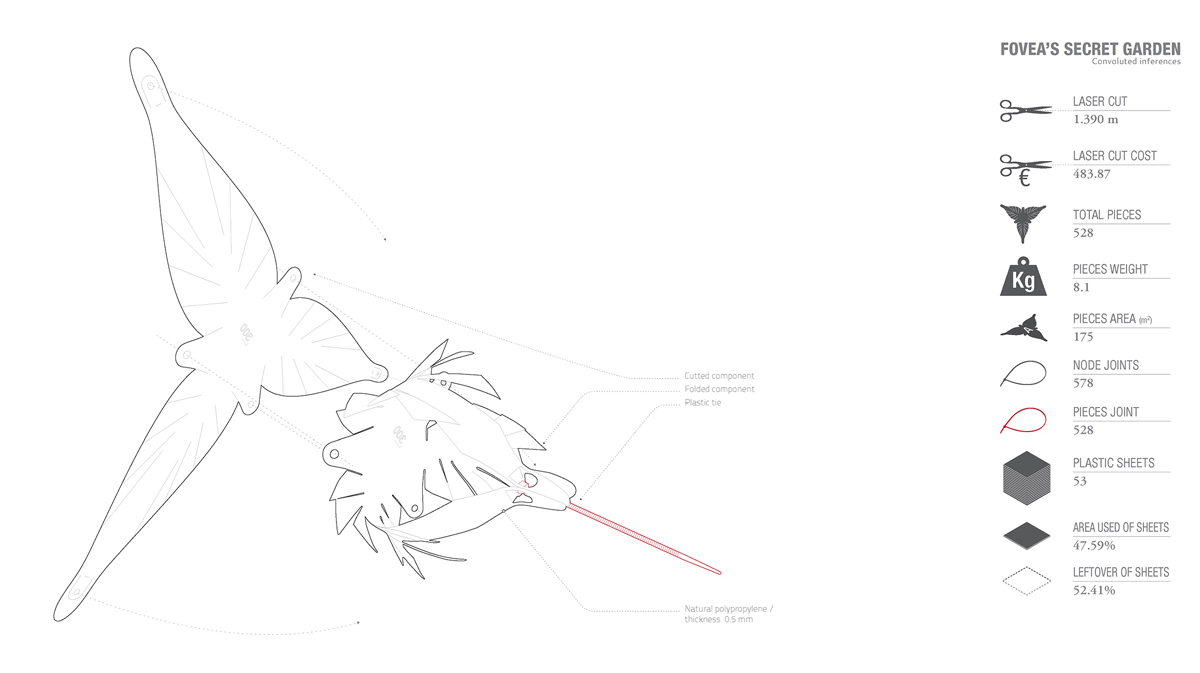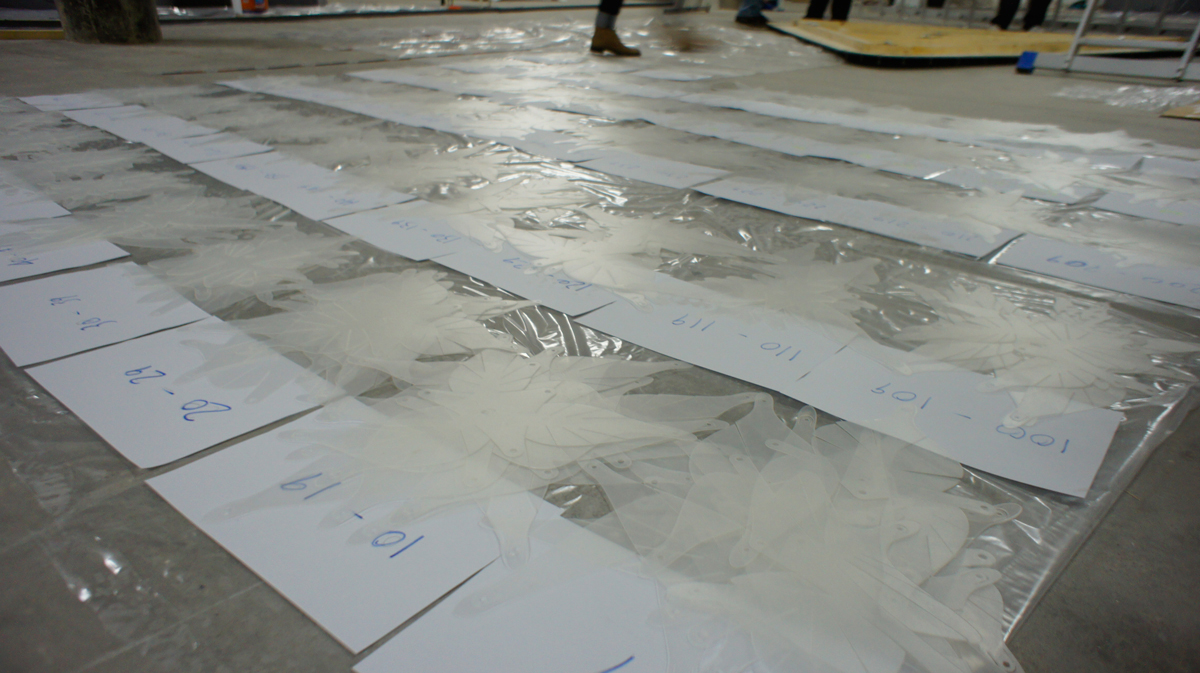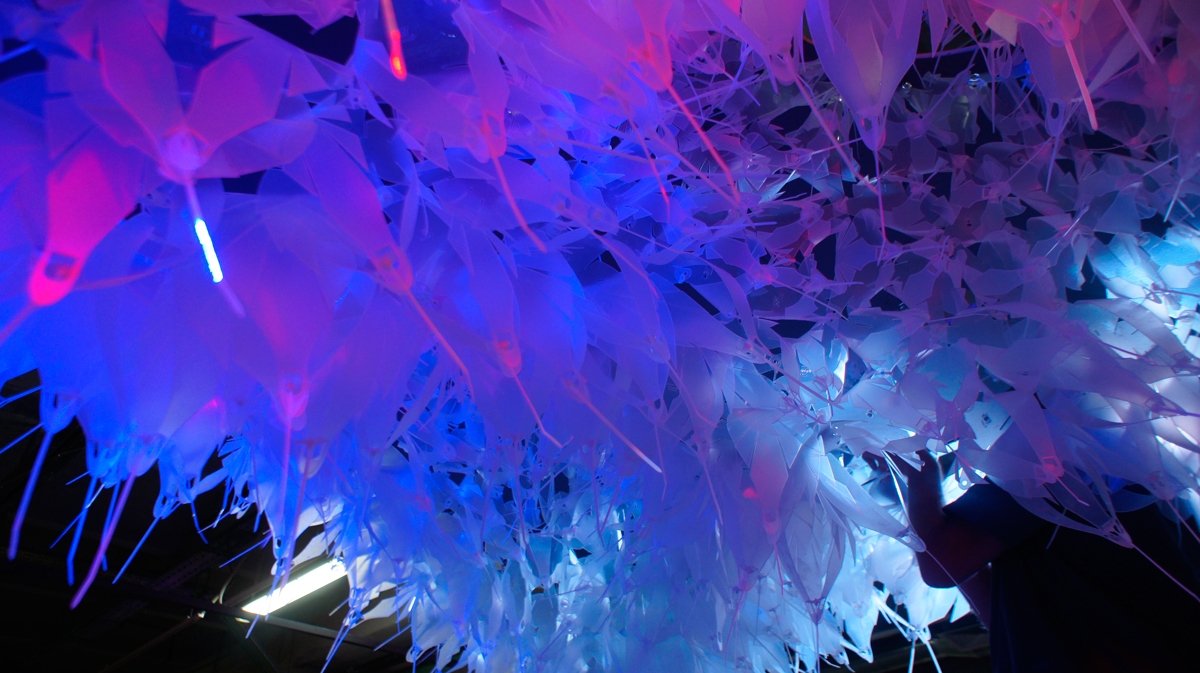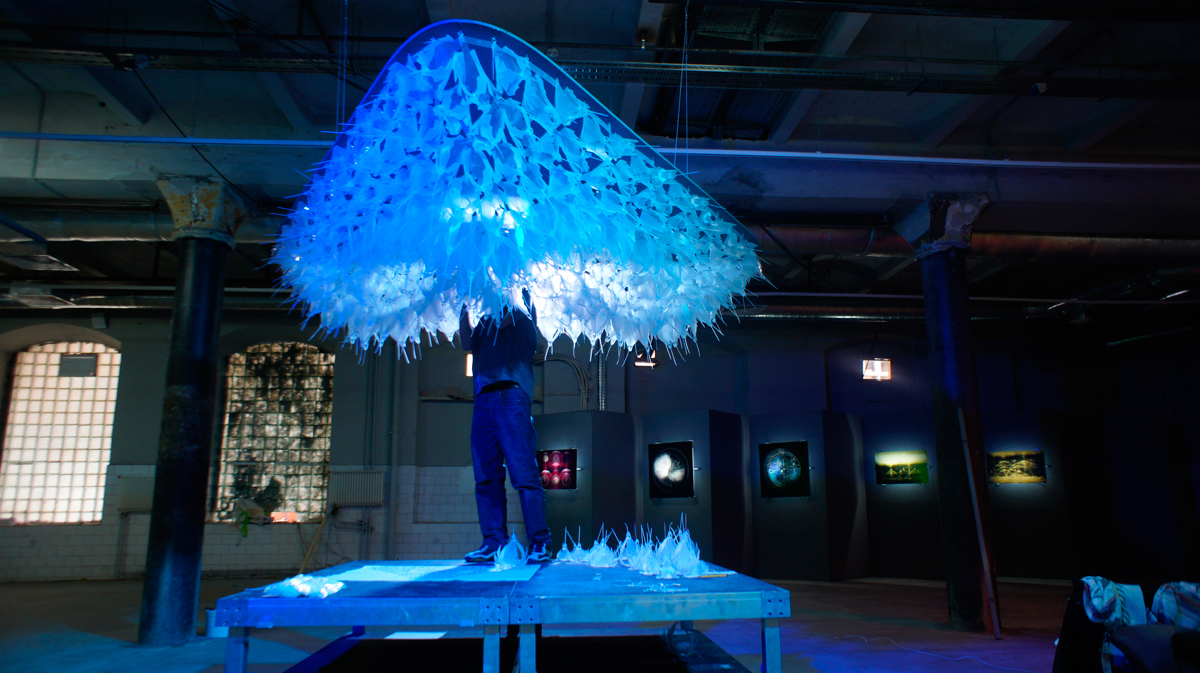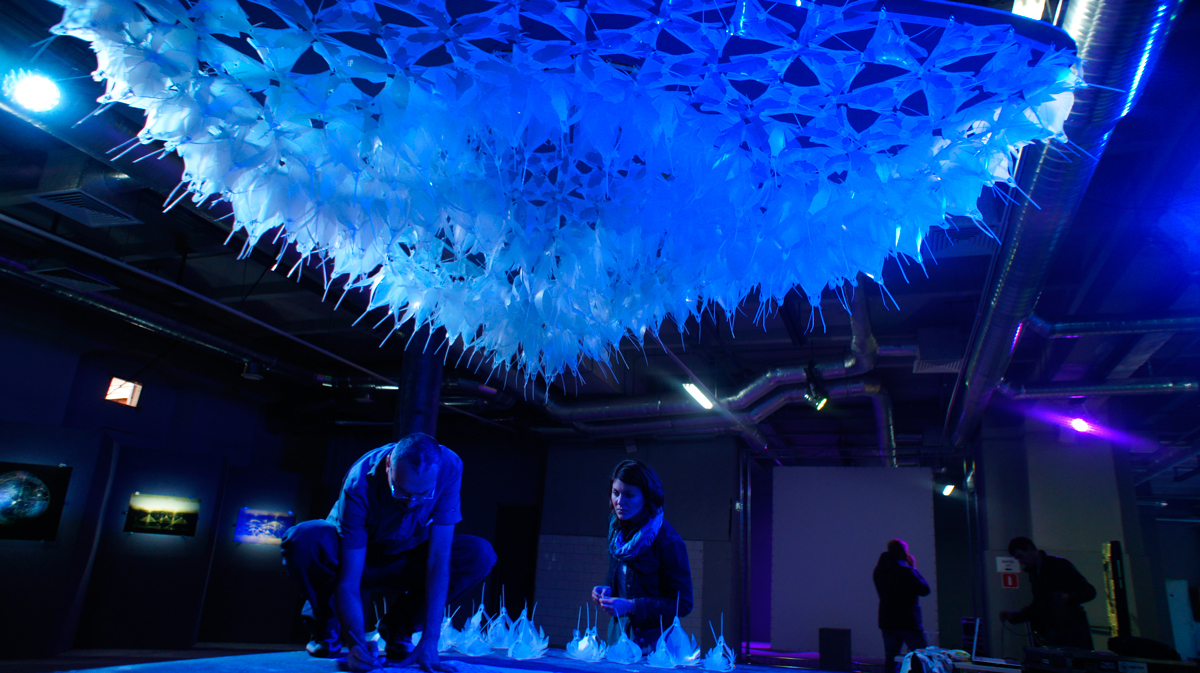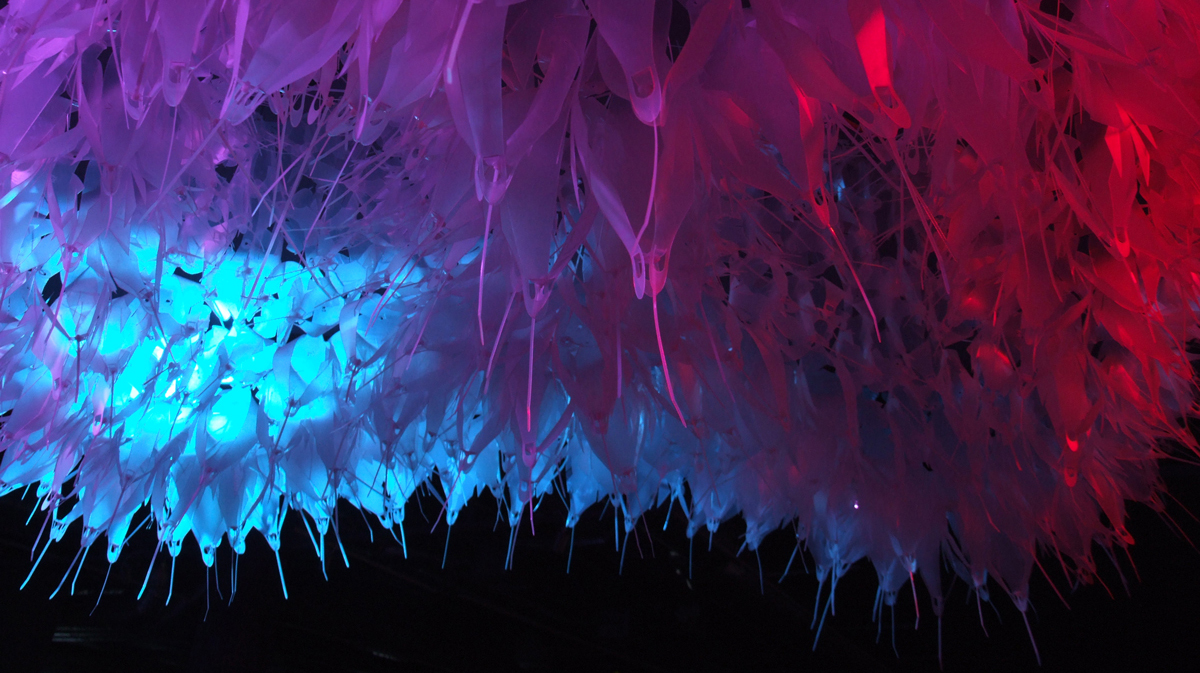On a purely technical standpoint, the installation design has followed 3 steps:. mesh subdivision (Grasshopper + Weaverbird): the general surface is generated from a starting mesh triangle which is then subdivided through Catmull-Clark algorithm, culling out 3 faces in order to generate the convolutions; mesh relaxation through cloth simulation (Blender): the relaxed convoluted mesh simulates closely enough the cloth stress condition (traction only, no compression, inflexion or torsion), an important prerequisite that allowed us to use lightweight flexible material such as natural polypropylene 0.5 mm thick; component proliferation (Grasshopper+ custom scripted components): as a result of the Catmull-Clark subdivision, all mesh faces are quadrangular. This condition was exploited by triangulating the mesh and choosing triangles in an alternate pattern: this strategy maintains structural integrity (all remaining triangles are connected) while using half of the surface area. In order to increase complexity and enrich the range of effects, components have a gradient variation in height according to their horizontal condition: the more they approach the horizontal condition, the higher and more developed they become. Each component, realized through laser cut from polypropylene flat sheets, has 3 radial “petals” with variable number of cuts and curve tangency according to the individual morphology and the height gradient, embedding the necessary cuts for assembly. All components are assembled using plastic ties.
